Taste and Occasion
Sponge cake is perfect as a fruit cake base, for cake rolls or as a foundation for multi-level cakes. With this basic sponge cake recipe and my tips, there's not much that can go wrong. Below, learn what to consider when baking a sponge cake base and alternatives.
The cake dough is a loose, fluffy mixture of eggs, sugar and flour. Except for the Vienna base, there is no fat in it except the eggs, making the result relatively low in fat and somewhat dry. Sponge cake recipes are the base for lusciously filled roulades and tarts, the foundation for fruit tarts, and small pastries such as ladyfingers and egg cookies.
The problem is that if you get the sponge mixture wrong, you may end up with a thin, hard cake base instead of an airy, high dough. To make sure this doesn't happen to you, read the step-by-step instructions for the perfect sponge cake base carefully first.
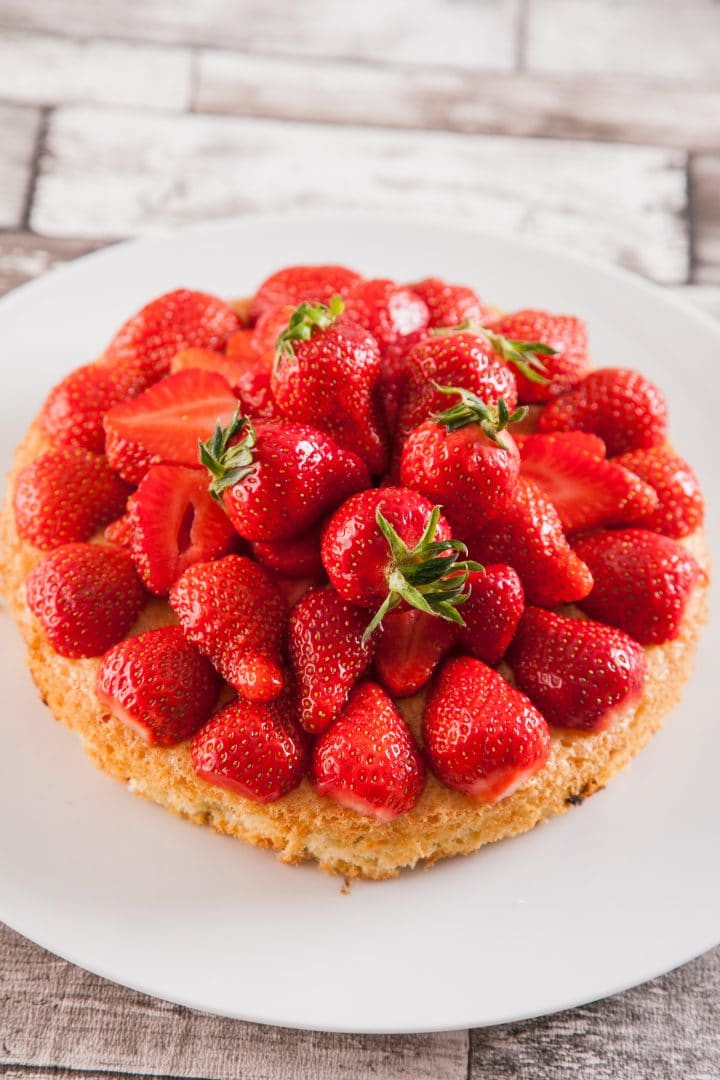
Ingredients
Before you start, you need to decide whether you want to make the sponge cake with whole or separated eggs. There are two different ways of preparing the recipe: sponge cake with entire eggs and hot water, or the one with separated eggs and stiffly beaten egg whites. Which one you use is a matter of taste and belief. The recipe with hot water and whole eggs will be a bit looser and more voluminous, while the one with beaten egg whites will be firmer. If using a food processor, I would recommend whole eggs because you can easily hit 10 minutes of volume into the mass, and the alternative is more suitable for beginners. If you only have a hand mixer, you should still take separate eggs and beat the beaten egg whites until stiff.
The base of any good sponge cake is a voluminous mass. The ingredients should be at room temperature. So take the eggs out of the refrigerator early enough! Important: Do not grease the baking pan. Otherwise, the cake will not rise or will collapse. Instead, only cover the bottom of the pan with baking paper.
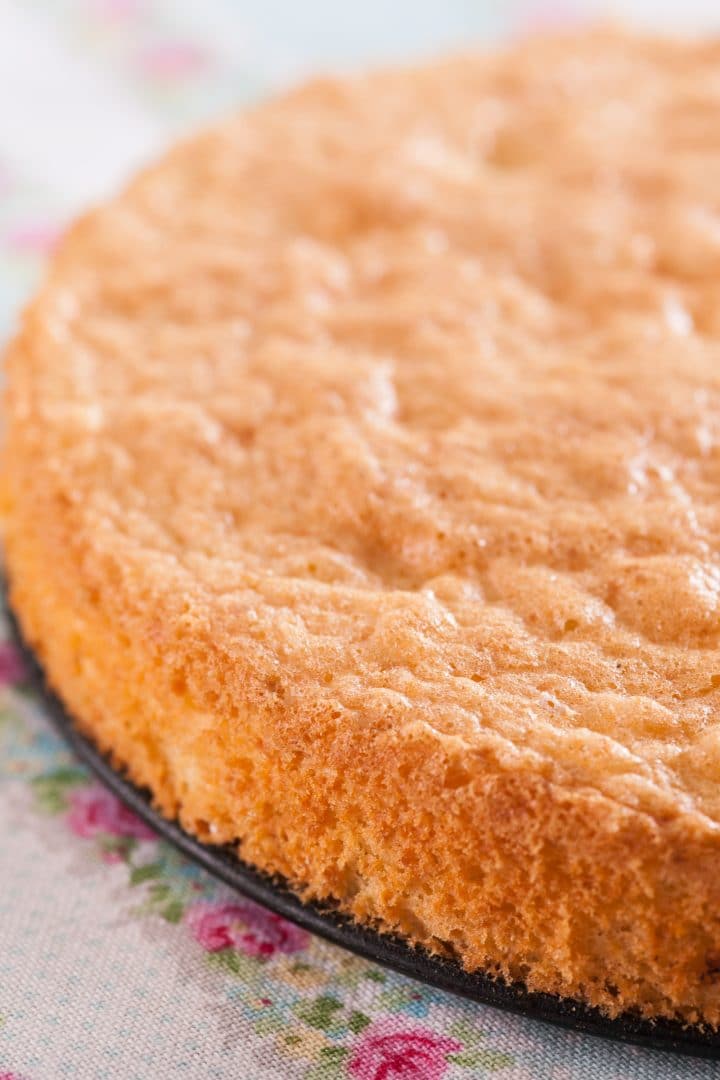
How to make the Basic Sponge Cake
For the alternative with separated eggs, perfect beaten egg whites are crucial. To do this, separate the eggs cleanly; the bowl and whisk must be free of grease to make the snow stiff. The beaten egg whites are ready when they form peaks and you could theoretically turn the bowl upside down. For the cake with whole eggs, beat them, together with the sugar, for a very long time until very light and fluffy. Then sift the flour and baking powder (and possibly starch) to avoid lumps. Very important: Do not stir in the flour mixture, but fold it in carefully! And not all at once, but little by little! Otherwise, the air bubbles will escape from the egg mixture and the sponge will not rise or become airy.
Your base is done baking when it's no longer moist but not too dry yet, either. Don't open the oven too early, though! If you want to cut a high base, for example for cakes, you should first let it cool well. It is best to separate cake with the help of a sharp knife, a thread or a cake divider.

Top Tip and Typical Problems
The sponge dough does not rise or collapses
There are all sorts of reasons that sponge cake can stay flat, get hard or dry:
The sponge mixture was not foamy enough
You stirred the sponge
Sponge cake batter stood around too long
You greased the mold thoroughly
The oven temperature did not fit
You opened the oven door too early
You did not bake the dough through
The sponge cake base bulges during baking
You greased probably the edge of the springform pan: If so, the sponge cake may not rise well on the sides. You can save curved sponge cake or pie crust by turning it over after baking and letting it cool virtually upside down.
The sponge cake is too dry.
If the dough becomes dry instead of fluffy, you may have made the following mistakes:
The sponge cake was in the oven too long: It can become dry if you bake your cake too long. Sponge cake is done baking when you press a little on the surface with your finger and the cake "bounces". If the cake has already been baked too long, the pressure remains in the dough and doesn't disappear immediately.
In addition to the baking time, you can also blame the oven setting for a sponge cake that is too dry. If possible, use top and bottom heat instead of convection.
Any lumps of flour can make the dough dry. If you sift too much flour onto the egg mixture at once, it may sink or clump to the bottom. It's best to add and sift a little at a time.
I hope with my tips you will always succeed with sponge cake in the future without any problems! The following basic recipe is sufficient for a baking sheet or a springform pan. If you take twice the amount of ingredients, you will get a very high cake base cut into three layers for cakes.
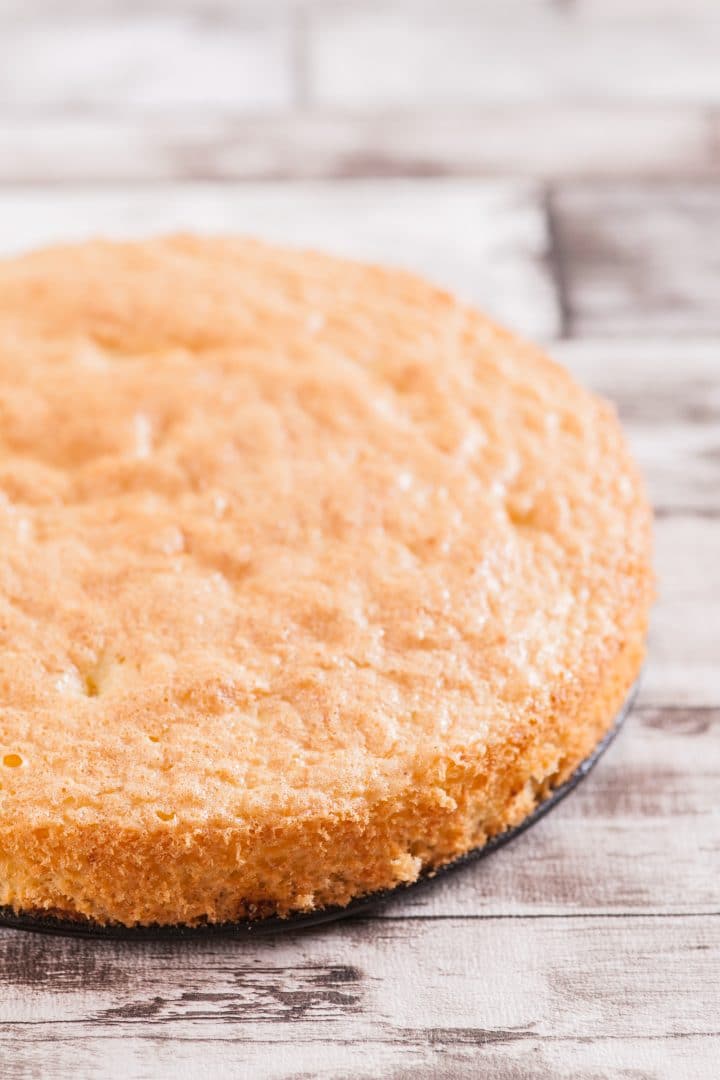
Recipe Card
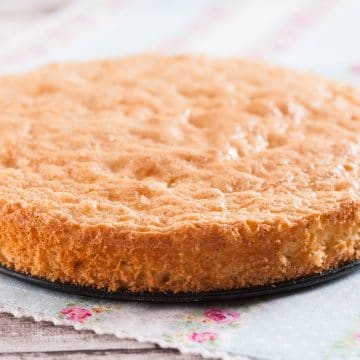
Sponge Cake Basic Recipe
Equipment
- 1 springform pan (10 in/26 cm)
Ingredients
For the sponge cake with whole eggs
- 3 eggs, medium
- 3 tablespoons hot water
- 80 grams (⅖ cup) sugar
- 1 pinch salt
- 120 grams (1 cups) all-purpose flour, Possibly half of cornstarch
- 1 teaspoon baking powder
For the sponge cake with separated eggs
- 3 eggs, medium
- 80 grams (⅖ cup) sugar
- 1 pinch salt
- 120 grams (1 cups) all-purpose flour
- 1 teaspoon baking powder
Instructions
Sponge cake with whole eggs
- Preheat the oven to 375°F/190°C. Cover the bottom of a 10 in/ 26 cm springform pan with baking paper or grease it. Beat the eggs with the water on the highest speed for about 8-10 minutes until light and fluffy, slowly adding the sugar and salt.
- Mix the flour and baking powder in a separate bowl. Sift the flour mixture onto the egg cream and gently fold in. Pour the sponge mixture into the baking pan, smooth it out and bake immediately for about 15-20 minutes, until golden. If a higher base is desired for multiple layers, then around 35 minutes.
Sponge cake with separated eggs
- Preheat oven to 375°F/190°C. Line the bottom of a 10 in/ 26 cm springform pan with baking paper or grease it. Separate the eggs cleanly. Beat the egg whites with the salt until stiff; slowly add half of the sugar. Absolutely no yolks should get into the egg whites; also, make sure the mixing bowl and beaters are free of grease.
- Beat the egg yolks with the remaining sugar until creamy. Then slide the egg-sugar mixture onto the beaten egg whites and gently fold in. Do not stir anymore, otherwise the air bubbles will escape!
- Mix the flour and baking powder in a separate bowl. Sift the flour mixture onto the egg cream and gently fold in. Pour the sponge mixture into the baking pan, smooth it out and bake immediately for about 15-20 minutes, until golden. If a higher base is desired for multiple layers, then around 35 minutes.
Ingredient substitutions
Variations
Depending on the type of pastry, sometimes more, sometimes fewer eggs are used in the recipe. For particularly moist and firm sponge cake ("Viennese mass"), you add liquid butter also added to the dough; beat eggs and sugar over a hot water bath. The chocolate version is made by replacing 20-30 grams of flour with the same cocoa. Unsweetened baking cocoa is best for the chocolate alternative

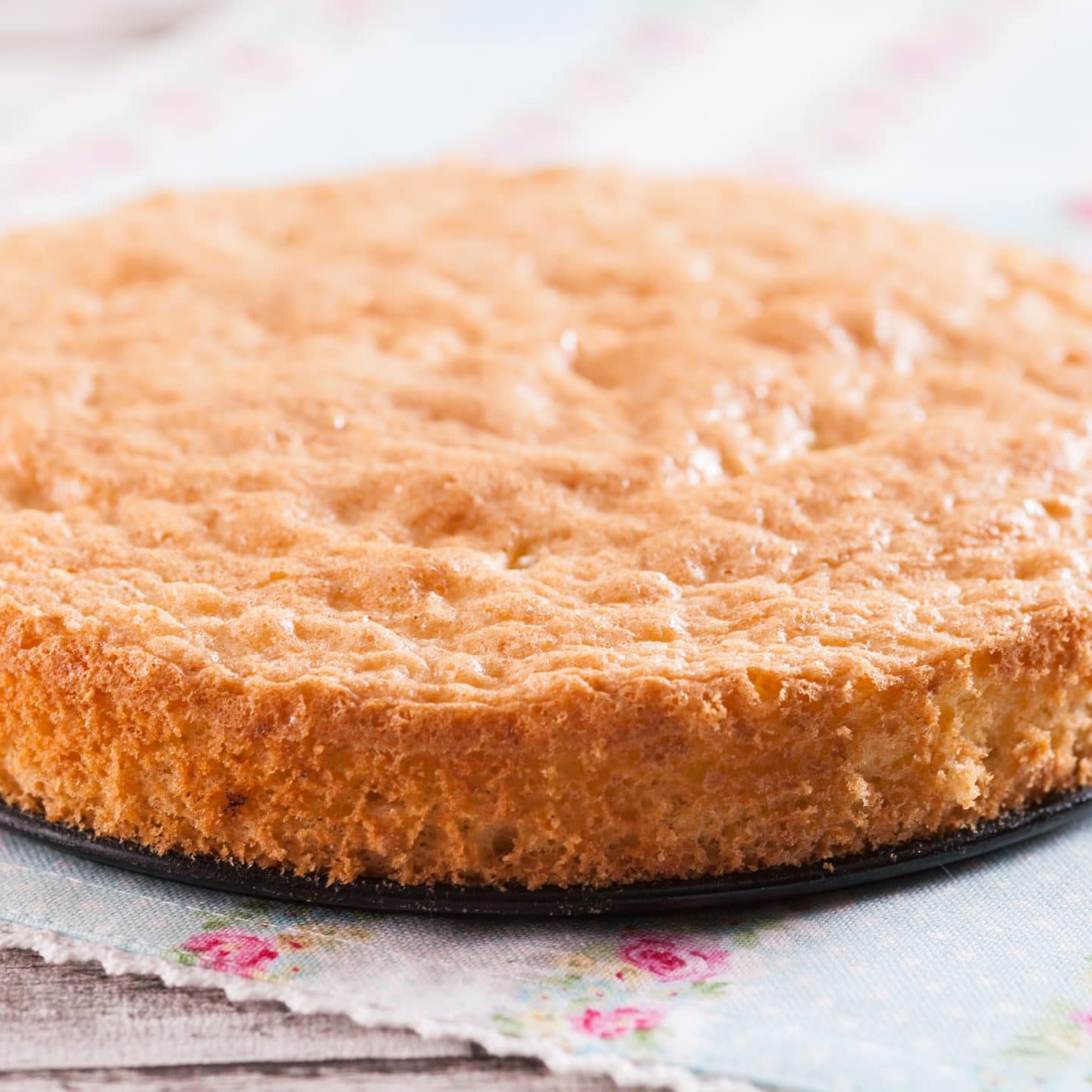

Comments
No Comments